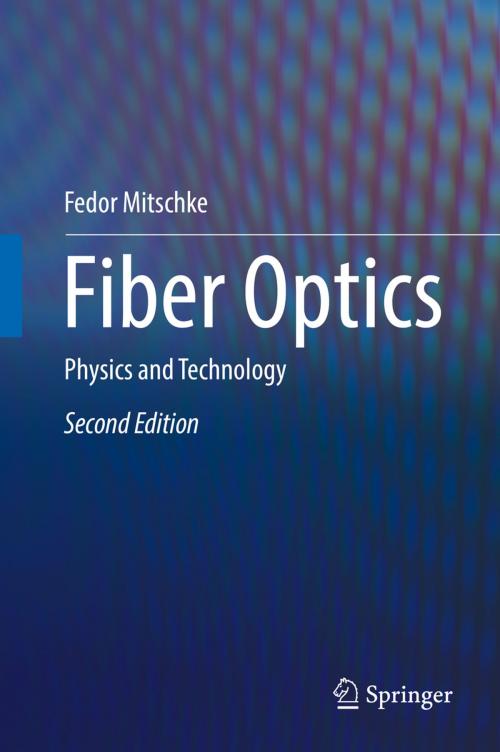Fiber Optics
Physics and Technology
Nonfiction, Science & Nature, Technology, Lasers, Science, Physics, Electricity| Author: | Fedor Mitschke | ISBN: | 9783662527641 |
| Publisher: | Springer Berlin Heidelberg | Publication: | August 16, 2016 |
| Imprint: | Springer | Language: | English |
| Author: | Fedor Mitschke |
| ISBN: | 9783662527641 |
| Publisher: | Springer Berlin Heidelberg |
| Publication: | August 16, 2016 |
| Imprint: | Springer |
| Language: | English |
This book tells you all you want to know about optical fibers: Their structure, their light-guiding mechanism, their material and manufacture, their use.
It began with telephone, then came telefax and email. Today we use search engines, music downloads and internet videos, all of which require shuffling of bits and bytes by the zillions. The key to all this is the conduit: the line which is designed to carry massive amounts of data at breakneck speed. In their data carrying capacity optical fiber lines beat all other technologies (copper cable, microwave beacons, satellite links) hands down, at least in the long haul; wireless devices rely on fibers, too.
Several effects tend to degrade the signal as it travels down the fiber: they are spelled out in detail. Nonlinear processes are given due consideration for a twofold reason: On the one hand they are fundamentally different from the more familiar processes in electrical cable. On the other hand, they form the basis of particularly interesting and innovative applications, provided they are understood well enough. A case in point is the use of so-called solitons, i.e. special pulses of light which have the wonderful property of being able to heal after perturbation.
The book will take you from the physical basics of ray and beam optics, explain fiber structure and the functions of optical elements, and bring you to the forefront of both applications and research. The state of the art of high speed data transmission is described, and the use of fiber optic sensors in metrology is treated. The book is written in a pedagogical style so that students of both physics and electrical engineering, as well as technicians and engineers involved in optical technologies, will benefit. The new edition is largely updated and has new sections on nonlinear phenomena in fibers as well as on the latest trends in applications.
This book tells you all you want to know about optical fibers: Their structure, their light-guiding mechanism, their material and manufacture, their use.
It began with telephone, then came telefax and email. Today we use search engines, music downloads and internet videos, all of which require shuffling of bits and bytes by the zillions. The key to all this is the conduit: the line which is designed to carry massive amounts of data at breakneck speed. In their data carrying capacity optical fiber lines beat all other technologies (copper cable, microwave beacons, satellite links) hands down, at least in the long haul; wireless devices rely on fibers, too.
Several effects tend to degrade the signal as it travels down the fiber: they are spelled out in detail. Nonlinear processes are given due consideration for a twofold reason: On the one hand they are fundamentally different from the more familiar processes in electrical cable. On the other hand, they form the basis of particularly interesting and innovative applications, provided they are understood well enough. A case in point is the use of so-called solitons, i.e. special pulses of light which have the wonderful property of being able to heal after perturbation.
The book will take you from the physical basics of ray and beam optics, explain fiber structure and the functions of optical elements, and bring you to the forefront of both applications and research. The state of the art of high speed data transmission is described, and the use of fiber optic sensors in metrology is treated. The book is written in a pedagogical style so that students of both physics and electrical engineering, as well as technicians and engineers involved in optical technologies, will benefit. The new edition is largely updated and has new sections on nonlinear phenomena in fibers as well as on the latest trends in applications.















